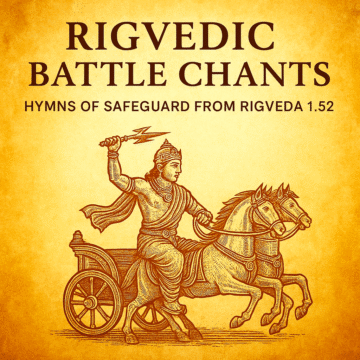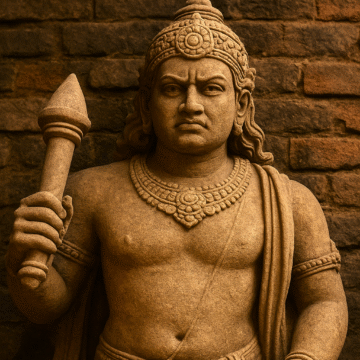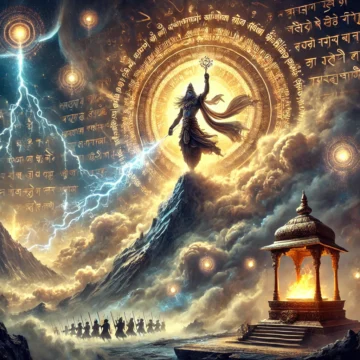East India Company Treaty, 1765, of Allahabad transformed the East India Company from traders into rulers, granting them Diwani rights over Bengal, Bihar, and Orissa. Signed by a weakened Mughal Emperor Shah Alam II, it legalized economic conquest, birthed the Dual System, caused Bengal’s famine, and laid the financial foundation of the British Empire in India.
Tag: Power
Rigvedic Battle Chants: Hymns of Safeguard from Rigveda 1.52
Rigvedic Battle Chants are not poetic ornaments—they are divine sound weapons. In Sukta 1.52, Indra’s thunderous mantras destroy cosmic obstructions and release divine order. These hymns are living tools of spiritual defense, empowering individuals to reclaim strength, break barriers, and restore clarity in times of civilizational and internal crisis.
East India Company: From Traders to Rulers – The Complete Transformation
The East India Company’s journey from a spice-trading venture to the ruler of India is one of history’s most dramatic transformations. Backed by a royal charter in 1600, it built trading posts, commanded armies, and exploited India’s political cracks. Through Plassey and Buxar, it secured dominance, accelerating the decline of Sanatana culture and Bharat’s sovereignty.
Vedic Invocations of Power: Indra’s Thunderbolt and the Eternal Hymns of Safeguard
“Vedic Invocations of Power” presents Indra’s protection hymns from Rigveda 1.51.7–12 as a living arsenal. The verses move from justice to cosmic arrival, where the Vajra breaks fortresses and releases waters. Each mantra is framed as disciplined defense—not aggression—aligning devotion with dharmic order and giving the smallest worshipper weaponized strength through praise.
Hymns of Safeguard: An Ancient Armory for Modern Crisis
In times of crisis, evidence and reason alone cannot protect a civilization. The Rigveda’s Hymns of Safeguard provide an ancient arsenal of spiritual defense. These mantras, once invoked in yajnas, are not gentle prayers but powerful invocations to Indra, the warrior deity, calling forth protection, strength, and the defeat of hostile forces.






